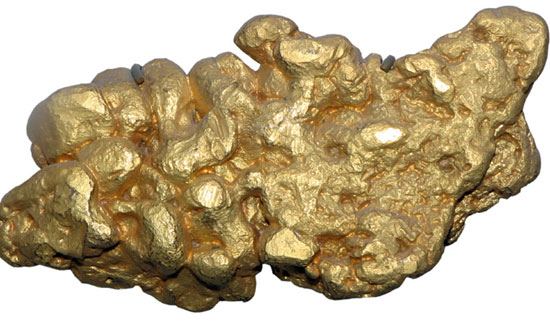Find gold with bacteria
Testing the presence of bacteria is a way for people to quickly determine whether gold is in the soil.

Bacteria decay gold into nanoparticles so they can penetrate the soil and rock before aggregating into the clump elsewhere. (Photo: Discovery).
Discovery News said that researchers from the University of Adelaide, Australia discovered that gold ore is often the product of the membrane made by bacteria. This finding eliminates a fairly common notion that gold ore is only produced by geophysical processes.
Scientists studied the DNA of bacterial membranes on gold particles from the Prophet mine in southeast Queensland, Australia. They found that 90% of the bacteria belonging to the strains of Delftia acidovorans and Cupriavidus metallidurans share the same genes that resist the toxicity of heavy metals.
In fact, the bacterial layers can decay gold into nanoscale particles so that gold moves through the rock and solidifies in another location . At the same time, the process sometimes creates a more pure secondary gold ore in the rocks.
' This is the first time we understand the mechanism of gold moving in rock. The bacteria dissolve gold, causing them to float along groundwater. This process can be quite fast , "said Joël Brugger, a researcher at the University of Adelaide.
In fact, the majority of active gold mines are due to the expansion of old gold mines discovered from tens of years ago.
' Finding gold seams is extremely difficult work. People often rely on elements in the topsoil, then dig down to find ore-bearing rocks. This method is sometimes effective, sometimes not , "Brugger said.
The new discovery is of special importance because it can open a method of using high technology to find gold. Testing the presence of bacteria is a way to quickly determine whether gold is in the soil. Even someday geologists can use biosensors to detect gold-soluble bacteria.
The research results are published in the September issue of Geology magazine.
- Producing 24-karat gold with bacteria
- Bacteria 'lay' golden eggs
- Difficult questions: How much gold is in the sea?
- Bacteria eat toxic metals and emit gold
- Use Google Earth to find the gold mine
- Find the world's largest monolithic gold ingot in Russia
- Mysterious fields full of gold made thousands of people rushing to fight in the West
- Gold is formed like?
- The interesting thing about gold may be unknown to you
- Why do we like gold?
- Find out how to plant trees
- The process of making gold inlaid roses and the know-how
 Why do potatoes have eyes?
Why do potatoes have eyes? 'Tragedy' the world's largest carnivorous life: Death becomes ... public toilet
'Tragedy' the world's largest carnivorous life: Death becomes ... public toilet Tomatoes were once considered 'poisonous' for 200 years
Tomatoes were once considered 'poisonous' for 200 years Detecting microscopic parasites on human face
Detecting microscopic parasites on human face